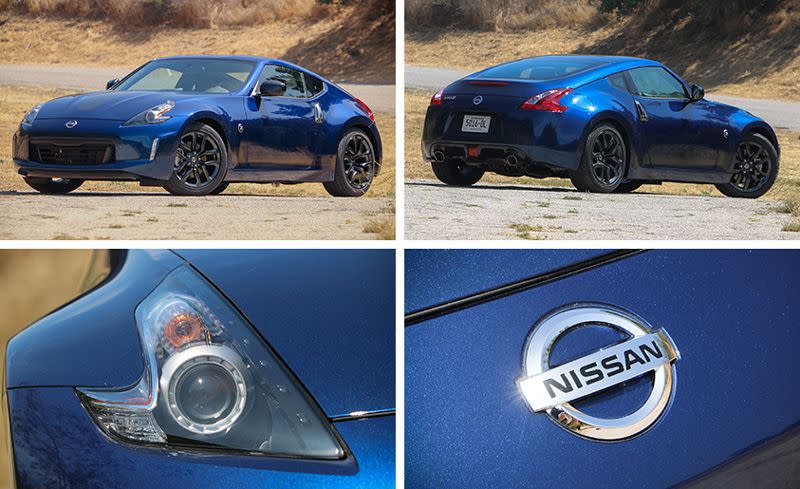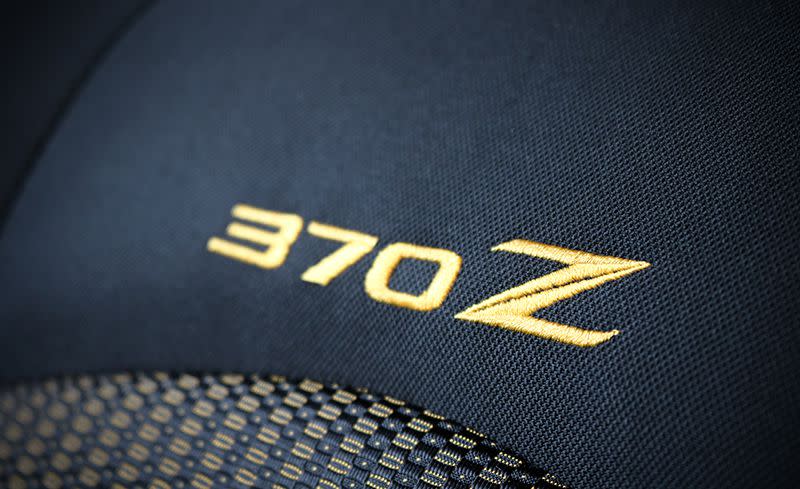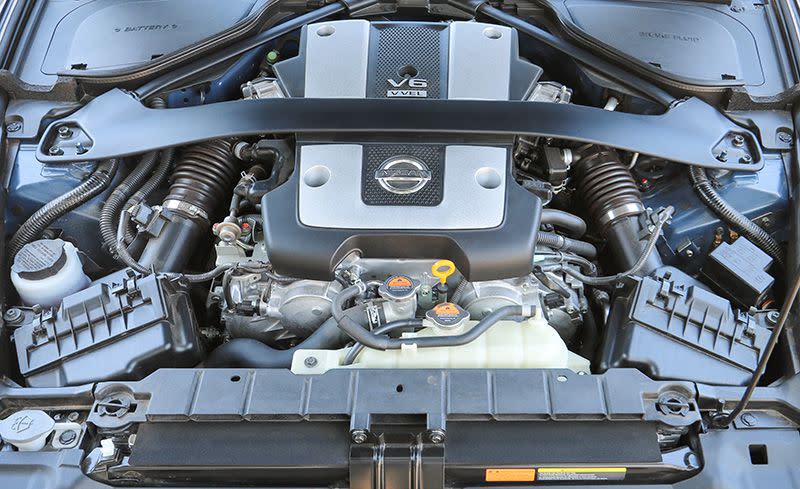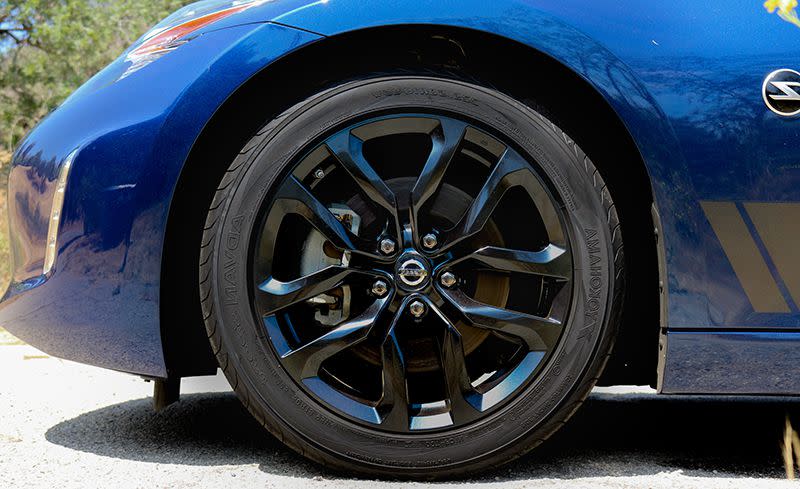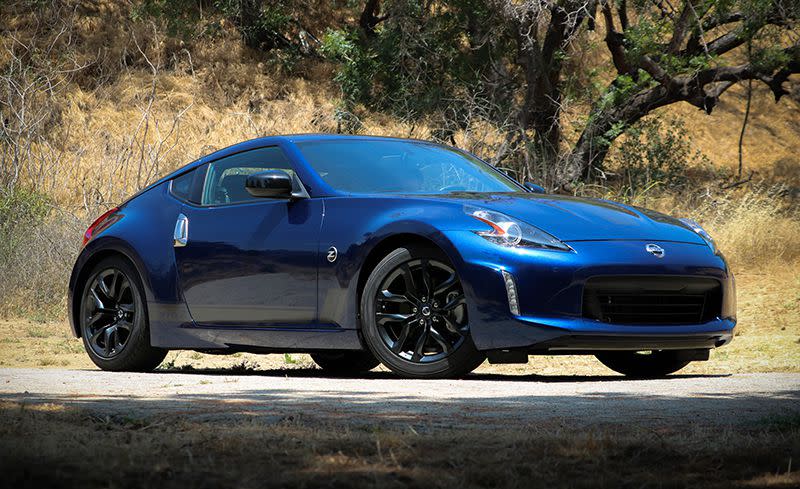2019 Nissan 370Z Manual Tested: A Not-So-Golden Oldie
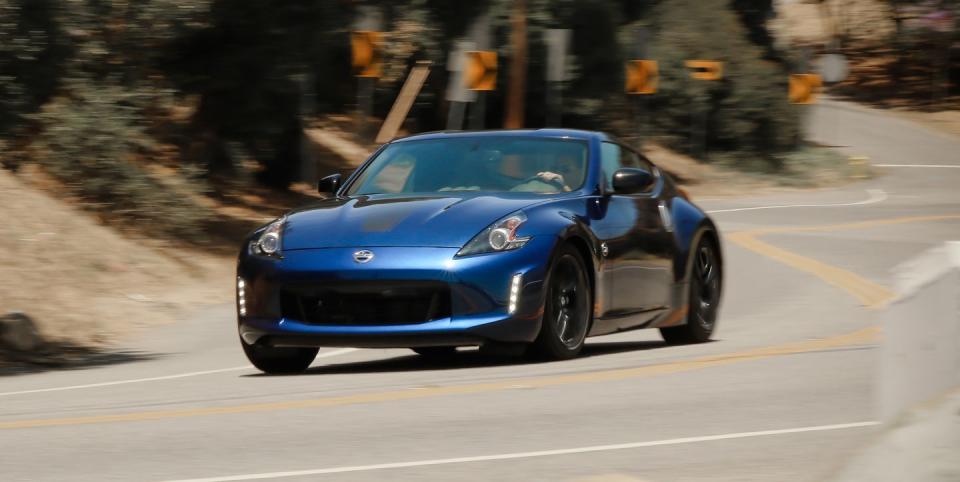
In the classic-car world, Z-cars are red hot. Interest is high, and there has been a surge in values over the last 10 years, as baby boomers and Gen-Xers, fueled by their inner high-schooler, are paying up for top-quality, well-preserved examples. First-generation Datsun 240Zs, sold from 1970 to 1973, and twin-turbo Nissan 300ZX models from the 1990s are leading the charge.
But over the same time period, interest in the current Nissan 370Z has gone the other way, dropping like a Clayton Kershaw curveball, as both the public and Nissan’s decision makers have all but forgotten about the two-seater.
The 370Z now is in its 10th year of production, and it hasn’t changed much since it replaced the 350Z for 2009. In the United States, where sales of sports cars have slowed, Z sales dropped to just 4614 units in 2017. So far this year they’re down again, by nearly 25 percent. The 370Z is now the automaker’s second-lowest-volume model, followed only by the GT-R, which also has gone without any major changes for a decade.
A neighbor summed it up when he took one look at this 2019 370Z in our driveway and texted me, “370Z?! Who knew those are still being made? Overdue for a refresh I’d say. Nissan is too busy pushing Rogues I guess.” Harsh. But with a starting price just over $30,000 and 332 horsepower under its hood, the rear-wheel-drive 370Z coupe isn’t exactly obsolete.
Last year, in an attempt to boost interest, Nissan added the Heritage Edition to the options list of the Z’s top-selling base model. Inspired by the ZAP package available on the 280Z in 1977, the $790 option brings black outside mirrors, gloss-black exterior graphics, yellow stitching on the interior, and yellow leather accents on the steering wheel, shifter, and center console. The Heritage Edition is offered in yellow, blue, or black.
With that package and a $140 set of floor mats, our blue test car with a six-speed manual transmission cost $31,805. That’s $1595 less than the starting price of a Mazda MX-5 Miata RF, which is smaller and lighter but packs only 155 horses in its 2.0-liter inline-four. (At least until the stouter, 181-hp engine arrives for 2019.)
Strong Six
The V-6–powered 370Z smokes the Mazda in a straight line, hitting 60 mph in 5.0 seconds and covering the quarter-mile in 13.6 at 106 mph. That’s more than a second quicker than the Mazda in both tests (as well as the Subaru BRZ). Incredibly, the 370Z accelerates at almost exactly the same rate as the 300ZX Turbo we tested in August of 1991.
Nissan’s VQ series of aluminum-block, DOHC V-6s has powered the Z since 2002, and versions of that engine have been used in everything from pickups to SUVs and sedans. In the 370Z it displaces 3.7 liters, has an 11.0:1 compression ratio, and spins to 7500 rpm. Power peaks at seven grand, and it makes 270 lb-ft of torque at 5200 rpm.
There’s also plenty of torque right off idle, which makes the Z easy to drive around town. If you’re feeling lazy, you can lug it through traffic in second or even third gear. The six-speed is geared short with tight ratios, so the V-6 never falls off its powerband if you don’t want it to. Even out on the highway at 80 mph in sixth, the engine is revving at more than 3000 rpm. Passing rarely requires a downshift.
Unfortunately, there’s far too much vibration in the shifter and clutch pedal, especially over 4500 rpm, which keeps the Z’s powertrain from feeling like it was designed in this century. The shifter’s stroke also is too heavy, and like the clutch there’s a rubbery quality to its action; we suspect Nissan attempts to dial out some of the engine’s harmonics with sloppy rubber bushings.
In stark contrast to the high-effort shifter is the Z’s overboosted steering, which feels as if it were lifted from a 1980s Cadillac DeVille. You can literally steer the Z with one finger.
Like the Miata-as well as the BRZ and the Porsche 911-the Nissan’s tachometer is in the center of the gauge cluster, right where it should be in a sports car. The 370Z also has an oil-temperature gauge, which is unusual these days, and a shift light that starts flashing red at 7000 rpm. Its pedal placement is perfect for heel-and-toe downshifts.
The interior is screwed together well, although the seats could use a little more thigh support, and the base model is thin on features. Missing modern amenities include an infotainment screen and driver aids like a blind-spot monitor. Our car also lacked the optional SychroRev Match function, which matches revs for you on downshifts, was the first such system when it launched on the 370Z for 2009, and is standard on the upper trim levels.
Balance and Grip
Z-cars have been laying down rubber on Los Angeles’s notorious Mulholland Highway for five decades. The twisty two-lane, which connects Hollywood to the Pacific, was a street racer’s paradise in the 1970s, and it’s still a good place to push a sports car. At seven-tenths the Z can put a smile on your face. The chassis, which is fortified with a three-point front strut-tower brace and a bar across the cargo area, feels solid, even over bumpy bits, and the Nissan’s balance is right despite having 55 percent of its 3327 pounds over its front tires.
But push it harder and the 370Z starts to disappoint. Suddenly the suspension, which can be choppy on L.A.’s concrete freeways, starts feeling flaccid, and the Z goes nose heavy with a fair amount of understeer. With its short wheelbase, wide track, and staggered 18-inch summer tires, the Z should have more grip. At the track it generated 0.89 g around a 300-foot skidpad; that matches the performance of the Miata RF, which weighs about 900 pounds less and rides on much smaller rubber. And it’s only slightly better than the 0.87 g the 300ZX recorded in 1991. Considering the advancements in tire technology alone over the last 27 years, that’s hard to believe.
When you’re really hustling, the Z’s brake pedal action also goes limp, feeling long and again overboosted. There’s some fade but not enough to be a problem, at least until you take the car to a track. At the track, the 370Z stopped from 70 mph in 180 feet, which is nine feet longer than the Mazda. Again, this is disappointing considering the Z’s sticky Yokohama Advan Sports.
The Nissan’s open differential is another issue. Turn off its stability-control system and the inside rear tire spins coming out of tight corners. If you want a limited-slip differential in your Z-and you do-Nissan makes you step up to the $3730-pricier 370Z Sport, which also brings bigger brakes and 19-inch wheels.
Replacing the 370Z does not seem to be in Nissan’s future product plans any time soon. As far as we know, work has not yet begun on a seventh-generation Z-car. In the meantime, the long-awaited reintroduction of the Toyota Supra, developed in partnership with BMW, is just around the corner.
Maybe my fellow Gen-Xers do have the right idea. A concours-condition 1996 300ZX twin-turbo can be had for the same $32,000 as our test car. Maybe even less. Hmmmm . . .
You Might Also Like

 Yahoo Finance
Yahoo Finance 